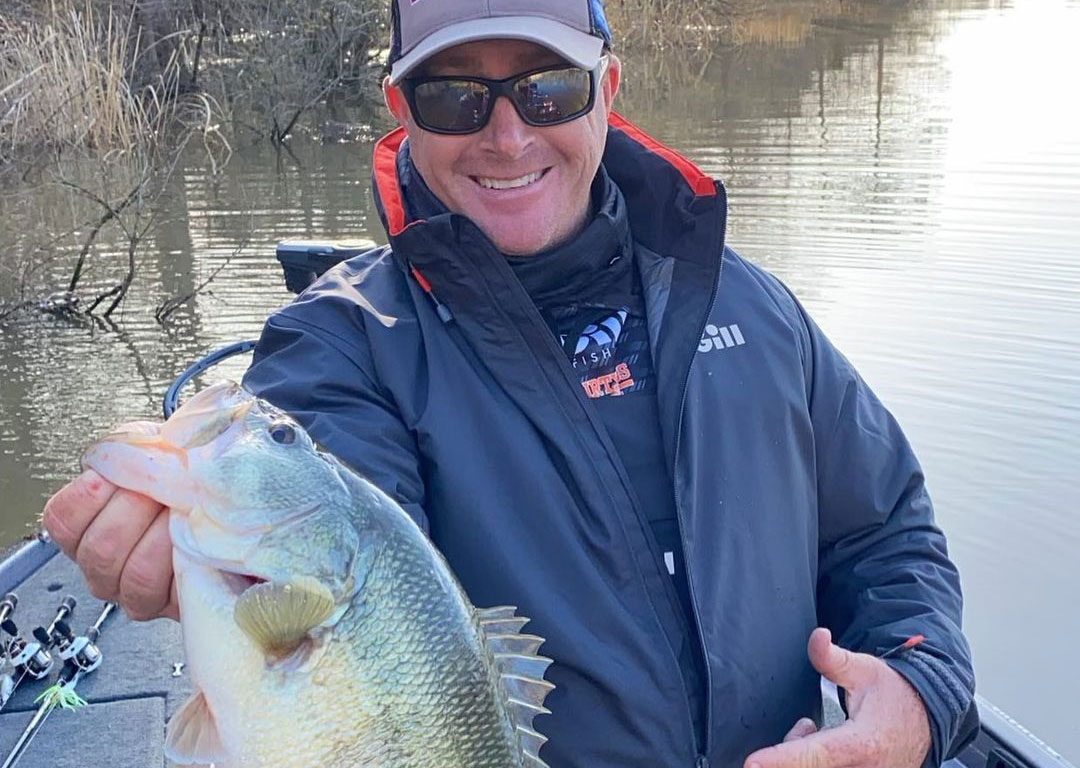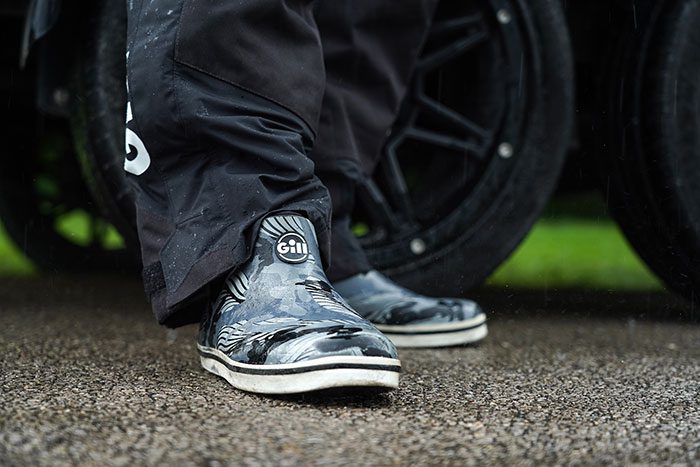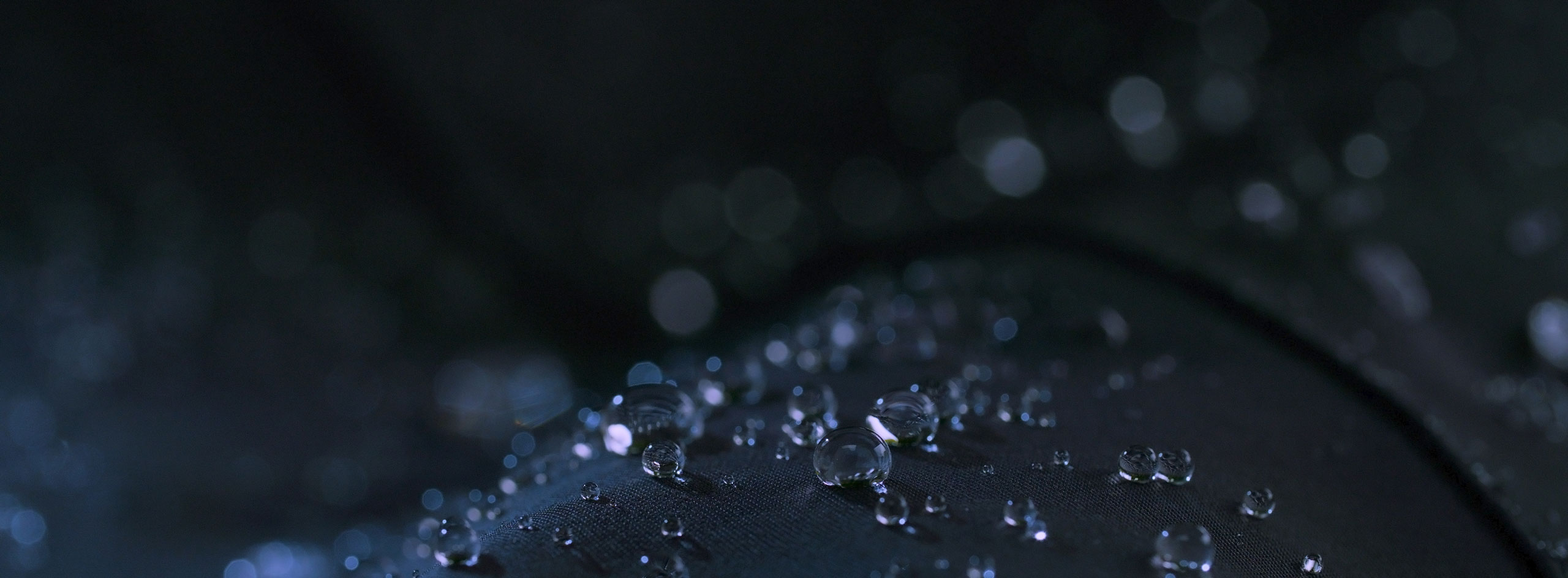The Ultimate Spring Bass Fishing Guide | Part 1: Deciphering the Stages of the Spawn to Locate Big Bass
The Ultimate Spring Bass Fishing Guide, a five-part series featuring interviews with our Gill Fishing pro staff, including Dakota Ebare, Blake Smith, and Quentin Cappo. These anglers share their expertise on the bass spawn and also break down their ideal spring scenario to catch a bass heavier than 10 pounds.
In the first part of the series, we’ll detail each stage of the bass spawn and how you can determine what stage is happening on your local lake.

Photo credit: Scott Canterbury
Gill Fishing pro anglers like Scott Canterbury, the 2019 Bassmaster Angler of the Year, earn a living by patterning bass in the spring. Quickly figuring out what stage of the spawn bass are in at any given lake is the difference between cashing a check and going home empty handed.
Part 1: Deciphering the Stages of the Spawn to Locate Big Bass
Spring offers some of the most exciting bass fishing of the year, whether you’re reeling in toad after toad from a pre-spawn honey hole or sight casting the fish of a lifetime on her bed, hoping to score that knee-shaking eat. But perhaps the best part of spring is the predictability. With just a few simple rules, you can pattern bass in any lake across the country.
Stages of the Spawn
Tournament anglers are living proof of just how predictable bass can be in the spring. Each stop on the tournament trail presents a unique set of weather conditions, habitats and even bass subspecies, and the ability to quickly decipher a lake and find fish is the difference between cashing a check and going home empty handed. A crucial part of tournament anglers’ success is their detailed knowledge of the bass spawn, so we spoke with some of Gill Fishing’s pro anglers to discuss how they catch big bass and lots of bass in the spring.
Bass reproduce in the spring, and this drives everything they’ll do from the end of winter until early summer. There are three stages of the spawn — pre-spawn, spawn, and post-spawn — and bass are incredibly predictable during each of these periods. Once you learn the conditions that trigger bass to enter each stage, where they’ll be and what they’re doing there, you’ll possess the power to unlock the secrets of your home lake — or any lake for that matter.
The bass spawn is made up of three phases:
- Pre-spawn: Bass move from their deep-water wintering habitats into transition areas, which are areas of deeper water next to shallow areas, like coves, back creeks and flats. They stage here in big groups and heavily feed in preparation for the spawn. With bass concentrated and fired up, the pre-spawn can result in some phenomenal fishing.
The pre-spawn stage begins when the water begins to warm up from its winter temperature. This varies depending on where you’re fishing, but pre-spawn water temperatures typically begin from the high 40’s to the lower 60’s.
“When we start getting into that 50-to-55-degree range, I’ll start moving into creeks and pockets that still have deeper water next to them,” says TK Dakota Ebare. “They still need access to deep water, where they’ll retreat if a cold front moves through, but they’re really thinking about spawning now.”
- Spawn: When the days get longer and the water is consistently warmer, bass move into shallow water to spawn. Bass can be found cruising the edges of shallow water or on their beds, which are crater-like nests where bass lay their eggs. Bass will still feed when they first move into shallow water, but they’ll stop eating once they’ve actually begun spawning. Even still, they’ll aggressively guard their beds from smaller fish trying to eat their eggs or fry, which means they can still be caught with a methodical approach.
“When bass are spawning, they don’t want to eat. Instead, they’ll simply move your bait off the bed but not actually inhale it,” says TK Dakota Ebare. “You’ve got to try and try until you get a hook set. That’s something important: if you have an area you know they’re bedding, fish through it slowly and methodically. You might have to make precise pitches.”
Typically, the spawn begins when water temperatures hit around 62 degrees. Bass may retreat to deeper water if an extreme cold front passes or water levels drastically drop. You’ll know this phase is over when you begin to see empty beds.
- Post-spawn: After spawning, bass return to the same areas they frequented during the pre-spawn phase. Like all new parents, they’re exhausted after bringing new life into the world. Their main focus will be eating as much as they can in order to return to full strength.
“In Florida, that’s usually the first grass line or deeper cover,” says TK Blake Smith. “In other areas, it’s those same first docks at the edge of a cove, rocky points or drop offs. They’re going back to eating shad, gobbling whatever up. If they’re done spawning and other things are spawning, like bream, bluegill or shad, you can switch to those lure patterns.”
Typically, the post-spawn lasts a few weeks until the water temperature gets into the mid-70’s, when bass will begin transitioning to their summer patterns.




